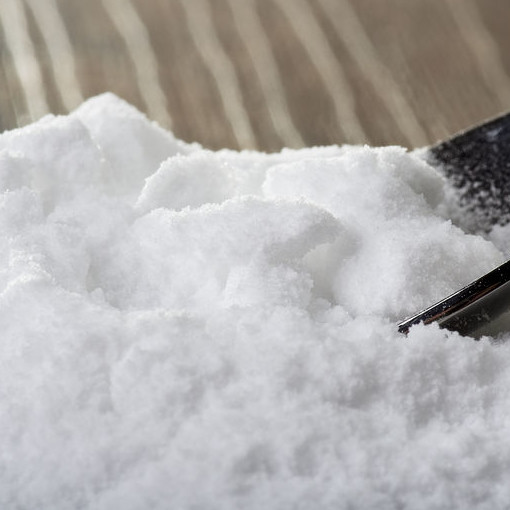
Encapsulated Baking Powder
What is Encapsulated Baking Powder?
Encapsulated baking powder is a release-on-demand chemical leavening system. It’s micro-compartments of baking powder (core) surrounded by a coating (wall). By creating this barrier, the entrapped material is prevented from dissolving prematurely in the dough or batter, thus allowing optimal leavening control and dough/batter rise until baking commences.
Commercially-available encapsulated leaveners (individual components or pairs) include:
- Baking powder
- Baking soda
- Fumaric acid
- Vinegar powder
Origin
Encapsulation was discovered in the 1950s when Barrett Green, a researcher with the National Cash Register, was attempting to develop carbonless paper. His invention involved coating the bottom of the upper sheet of a two-sheet paper assembly with tiny ink microcapsules which were designed to break open and release the entrapped ink when one writes or types on the top paper sheet.1
This invention led to endless possibilities ranging from the creation of scratch-and-sniff fragrance stickers in magazine ads to controlled release of flavors and other actives for food and nutrition as well as agriculture, pharma, etc.
Familiar examples of microencapsulation in foods include fat-coated cheese favor in microwaveable popcorn, extended release of flavors in chewing gums, delayed leavening release in refrigerated and frozen doughs and cake batters, stabilized nutrients in breakfast cereals and many others.
Function
Commercial handling of frozen batters and dough relies on overnight thawing followed by varying hours of in-store holding until baking commences. The result is continuous gassing over time and eventual deterioration in the baked product quality. Formulating with encapsulated baking powders can:
- Provide consistent leavening following subsequent freeze thaw abuse
- Enhance dough/batter shelf life by delaying ingredients interactions and preventing premature leavening and CO2 gas build up
- Protect the leavening system from moisture during dough/batter storage
- Allow for more sustained leavening action resulting in a light and soft textured product free of discoloration
Processing
Leavening agents are typically encapsulated in a fat/lipid material so that their release is activated when the coating around the core particles melts during baking. The following is a list of main coating lipids (individually or blends) used in microencapsulating baking powder and their melting ranges:
- Fractionated palm oil (131-140 °F / 55-60 °C)
- Fully hydrogenated palm oil (136-145 °F / 58-63 °C)
- Mono- and diglycerides (136-145 °F / 58-63 °C )
- Fully hydrogenated cottonseed oil (142-149 °F/ 61-65 °C)
- Fully hydrogenated soybean oil (153-160 °F / 67-71 °C)
Commercially two main encapsulation technologies are used in encapsulating baking powder: Fluid bed coating and spray-chilling/cooling.
In the fluid bed process, solid core particles (baking powder) are air-fluidized in a closed chamber while being sprayed with atomized molten lipid droplets. As the droplets come in contact with the solid particles, they spread onto their surfaces and further solidified by cooling. Continuous fluidization and spraying lead to fat coalescence into one integral hardened film when cooled. One drawback of fluid bed coating is the generation of low bulk density particles.
Fluid bed coating is favored for:
- Its ability to create coated particles with uniform films free of cracks and crevices.
- Possibility of recycling the coated particles through the coating process until an adequate film thickness is achieved
In the spray cooling/chilling process, a mixture containing the core and molten lipid is nebulized by an atomizer and entered into an air-cooled chamber to solidify the wall material. Low encapsulation capacity and incomplete coating of the solid particles are some of the drawbacks of spray cooling technology.
Spray cooling microencapsulation is favored for:
- Its economy
- Easy to scale-up
- Desirable high-bulk density microparticles
Important parameters when encapsulating baking powder and chemical leavening systems:2
- Coated film should be intact and completely free from cracks or crevices.
- Melting temperature of the coating/film should match the product’s baking temperature cycle.
- Optimizing particle size and morphology of the encapsulated baking powder (avoid the generation of large particle aggregates which may result in premature release and localized brown spots in the baked product). Typical particle size ranges from few to several microns.
- Typical coat:core ratio is 80:20
- GMO restrictions are critical when choosing a lipid coating material.
Application
Typical applications for encapsulated baking powder and chemical leavening systems include:
- Frozen/refrigerated bread dough
- Canned refrigerated dough
- Frozen/refrigerated cake batters, muffins
- Frozen/refrigerated cookie dough
- Frozen/refrigerated rising crust pizza
- Refrigerated tortillas
- Baked products dry mixes
References
- Green, B. K. and Lowell, S. Oil-containing microscopic capsules and method of making them. US Patent 2800457A (to NCR).
- Lakkis, J.M. (Ed). Encapsulation and Controlled Release Technologies in Food Systems; Wiley-Blackwell Publ. Co. (2nd Edition), April 2016, pp. 256.

